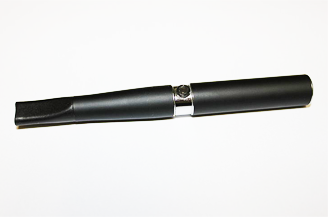Lung Health Group: Evidence on E-Cigarettes Is Lacking, Regulation Needed
The International Union Against Tuberculosis and Lung Disease issued a new position statement in November on e-cigarettes and electronic nicotine delivery systems, calling for stricter regulation of these products, which are rapidly growing in popularity.
E-cigarettes and electronic nicotine delivery systems should be better regulated, according to the International Union Against Tuberculosis and Lung Disease

E-cigarettes and electronic nicotine delivery systems (ENDS) have not been scientifically validated and may be more dangerous than they are often considered, according to the International Union Against Tuberculosis and Lung Disease. The Union issued a new position statement in November on e-cigarettes and ENDS, calling for stricter regulation of these products, which are rapidly growing in popularity.
“Right now, significant numbers of people around the globe are using these products,” said Jose Luis Castro, the interim executive director of the organization, in a press release. “They just don’t know what they are ingesting, what that might mean for their health in the long term or what their use of e-cigarettes and ENDS means for the people around them. It is an echo of the traditional cigarette industry in the 20th century, which created the current global epidemic of tobacco-related harm and mortality. To avoid repeating the same mistakes, we need to act now to regulate e-cigarettes and protect consumers around the world.”
Importantly, the Union asserts that the safety of these devices has not been scientifically demonstrated. In general, it is claimed that they release only water vapor, but “adverse health effects for third parties exposed cannot be excluded because the use of electronic cigarettes leads to emission of fine and ultrafine inhalable liquid particles, nicotine, and cancer-causing substances into indoor air,” according to the position statement. An assessment by the German Cancer Research Center found that the aerosol of some liquids in the devices contains substances including formaldehyde, acetaldehyde, acrolein, diethylene glycol, chromium, and lead.
And aside from potential third-party health effects, the efficacy of the devices themselves has yet to be conclusively proven. They are intended as smoking cessation aids, but research on their efficacy as such has been somewhat inconclusive. Some people do indeed cut back or quit smoking using e-cigarettes.
Among the only randomized trials on their efficacy was conducted in New Zealand. The study randomized 657 smokers who wanted to quit to either nicotine e-cigarettes, nicotine patches, or placebo e-cigarettes. After 6 months, verified abstinence from smoking was found in 7.3% of nicotine e-cigarette patients, 5.8% of patch patients, and 4.1% of placebo patients; they concluded that there was thus insufficient statistical power to determine any differences, and that more research is “urgently needed” to establish benefits of the devices.
The Union also points out that regulation of e-cigarettes and ENDS varies widely around the world, and they advocate regulating them as medicines. Some countries, including Brazil, Norway, and Singapore, have simply banned the devices.
“E-cigarette and ENDS manufacturers and vendors have been vocal about the supposed benefits of their products and quick to shout down calls for regulation or questions about their contents,” Castro said. “Based on our review of the available evidence, we strongly support the regulation of the manufacture, marketing, and sale of electronic cigarettes or electronic nicotine delivery systems; and our preferred option is to regulate these products as medicines.”